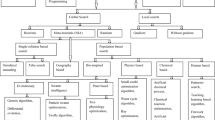Abstract
In the existing literature, most of the purchasing models were developed only for retailers problem ignoring the constraint of storage capacity of retailers shop/showroom. In this paper, we have developed a deterministic model of wholesaler-retailers' problem of single product. The storage capacity of wholesaler's warehouse/showroom and retailers' showroom/shop are assumed to be finite. The items are transported from wholesaler's warehouse to retailers' Own Warehouse (OW) in a lot. The customer's demand is assumed to be displayed inventory level dependent. Demands are met from OW and that spaces of OW will immediately be filled by shifting the same amount from the Rented Warehouse (RW) till the RW is empty. The time duration between selling from OW and filling up its space by new ones from RW is negligible. According to relative size of the retailers' existing (own) warehouse capacity and the demand factors, different scenarios are identified. Our objectives are to optimize the cost functions of wholesaler and two retailers separately. To solve this problem, a real coded Genetic Algorithm (GA) with roulette wheel selection/reproduction, whole arithmetic crossover and non-uniform mutation is developed. Finally a numerical example is presented to illustrate the results for different scenarios. To compare the results of GA, Generalised Reduced Gradient Method has been used for the problem. Also, a sensitivity analysis has been performed to study the variations of the optimal average cost with respect to the different parameters.
Similar content being viewed by others
References
R. V. Hartely,Operations research—a managerial emphasis, Goodyear Publishing Company, (1976), 315–317.
K. V. S. Sarma,A deterministic inventory model with two levels of storage and an optimum release rule, Opsearch29 (1983), 175–180.
T. M. Murdeshwer and Y.S. Sethi,Some aspects of lot size models with two levels of storage, Opsearch22 (1985), 255–262.
U. Dave,On the EOQ models with two levels of storage, Opsearch25 (1988), 190–196.
A. Goswami and K. S. Chaudhuri,An economic order quantity model for items with two levels of storage for a linear trend in demand, Journal of Operational Research Society43 (1992), 157–167.
A. K. Bhunia and M. Maiti,A Two Warehouse Inventory Model for deteriorating items with a linear trend in demand and shortages, J. Oper. Res. Soc.49 (1998), 287–292.
R. L. Levin, C. P. Mclaughlin, R. P. Lamone and J. F. Kottas, Production/operations Managemen. Contemporary policy for managing operating system. McGrew-Hill, New York, 1974.
R. Gupta, and P. Vrat,An EOQ model for stock dependent consumption rate, Opsearch,23, (1986), 14–19.
R. C. Baker and T. L. Urban,A deterministic inventory system with an inventory-level-dependent demand rate, Journal of Operational Research Society39 (1998), 823–831.
B. N. Mandal and S. Phaujdar,An inventory model for deteriorating items and stock-dependent consumption rate. Journal of Operational Research Society4 (1989), 483–488.
T. L. Urban,An inventory model with an inventory-level-dependent demand rate and relaxed terminal conditions. Journal of Operational Research Society43 (1992), 721–724.
S. S. Rao,Multi Objective Optimization in Structural Design with Uncertain Parameters and Stochastic Process, AIAA Journal22 (1984).
G. Padmanabhan and P. Vrat,EOQ models for perishable items under stock-dependent selling rate. European Journal of Operational Research86 (1995), 281–292.
T. K. Roy and M. Maiti,Multi-objective inventory models of deteriorating items with some constraints in a fuzzy environment, Computers and Operations Research,25 (1998), 1085–1095.
N. K. Mahapatra, T. K. Roy and M. Maiti,Multi-objective multi-item inventory problem, Proceedings of the Seminar on Recent Trends and Developments in Applied Mathematics, B. E. College (DU), Howrah, India, March 3 (2001), 44–68.
D. E. Goldberg,Genetic Algorithms: Search, Optimization and Machine Learning, Addison Wesley, Massachusetts, 1989.
Z. Michalewicz,Genetic Algorithms+Data Structure=Evolution programs, Springer Verlag, Berlin, 1992.
M. Sakawa,Genetic Algorithms and fuzzy multiobjective optimization, Kluwer Academic Publishers, 2002.
S. Forrest (Ed.),Proceedings of 5th International conference on Genetic Algorithms Morgan Kaufnann, California, 1993.
L. Davis (Ed.),Genetic Algorithms and Simulated Annealing, Pitman Publishing, London, 1987.
L. Davis (Ed.),Handbook of Genetic Algorithms, Van Nostrand Reinhold, New York, 1991.
M. Khouja, Z. Michalawicz and M. Wilmot,The use of Genetic Algorithms to solve the economic lot size scheduling problem. European Journal of Operational Research110 (1998), 509–524.
R. Sarkar and C. Newton,A Genetic Algorithm for solving economic lot-size scheduling problem, Computers & Industrial Engineering42 (2002), 189–198.
G. A. Gabriel and K. M. Ragsdell,The generalized reduced gradient method, AMSE journal of Engineering for industry99 (1977), 384–400.
S. Mandal and M. Maiti,Multi item fuzzy EOQ models using genetic algorithm, Computers & Industrial Engineering44 (2002), 105–117.
K. M. Miettinen,Non-linear Multi-objective Optimization, Kluwer's International Series, 1999.
Author information
Authors and Affiliations
Corresponding author
Additional information
N. K. Mahapatra is a lecturer in Mathematics at Panskura Banamali College. He received his B. Sc (Honours) in 1996 and M. Sc. in 1998 from Vidyasagar University, Midnapore-721102, WB, India and doing Ph. D. at this university. His research interests focus on inventory and production management, fuzzy mathematics, interval mathematics, multi-objective optimization and mathematical programming methods.
A. K. Bhunia is a senior lecturer in Mathematics. His fields of research are inventory management and Genetic Algorithm. He has published papers in various international journals includingEuropean Journal of Operations Research, Computers & Operations Research, OBSEARCH.
M. Maiti is a Professor in the Department of Applied Mathematics with Oceanology and Computer Programming, Ex-Dean, Faculty of Science and Ex-Vice Chancellor in Vidyasagar University. Several students have obtained Ph. D. degree under his guidance. His fields of research are inventory management, elasticity and catastrophic theory. He has published papers in various international journals includingEuropean Journal of Operations Research, Journal of Operational Research Society (UK), Computers & Operations Research, Applied Mathematical Modelling, Fuzzy Mathematics, OPSEARCH etc.
Rights and permissions
About this article
Cite this article
Mahapatra, N.K., Bhunia, A.K. & Maiti, M. A multiobjective model of wholesaler-retailers' problem via genetic algorithm. JAMC 19, 397–414 (2005). https://doi.org/10.1007/BF02935814
Received:
Revised:
Issue Date:
DOI: https://doi.org/10.1007/BF02935814




